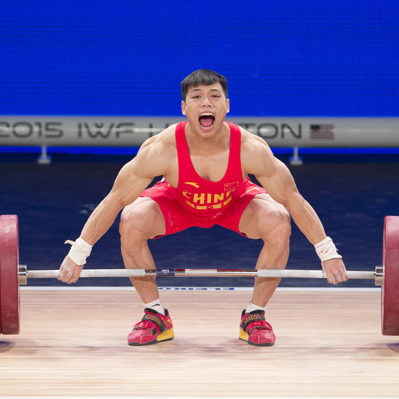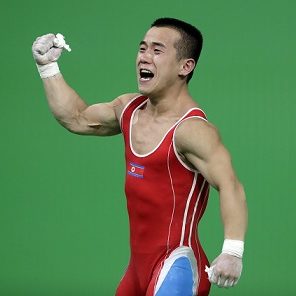The clean & jerk is the second of the two lifts (the snatch and the clean & jerk) contested in the sport of weightlifting (AKA Olympic weightlifting). The athlete lifts the barbell first from the floor to the shoulders (clean), and then from the shoulders to overhead (jerk).
Clean and Jerk
History
The clean and jerk is a composite of two weightlifting movements, most often performed with a barbell: the clean and the jerk. During the clean, the lifter moves the barbell from the floor to a racked position across the deltoids, without resting fully on the clavicles. During the jerk the lifter raises the barbell to a stationary position above the head, finishing with straight arms and legs, and the feet in the same plane as the torso and barbell.
Of the several variants of the lift, the most common is the Olympic clean and jerk, which, with the snatch, is contested in Olympic weightlifting events.
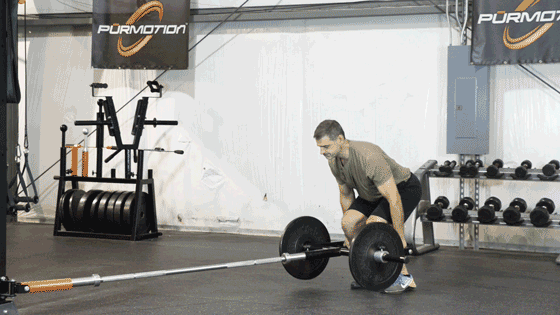
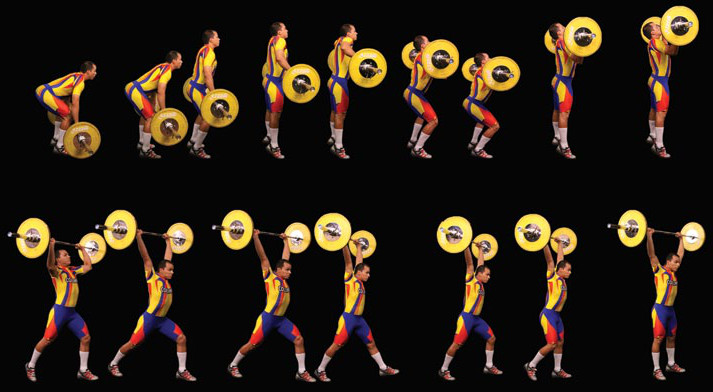
Rules
The Lifts: The Snatch is a single movement where the lifter holds the bar in a wide grip, lifts the weight off the ground overhead in one movement, then stands upright holding the bar overhead. The Clean and Jerk is a two-part movement. First, the lifter holds the barbell in a shoulder-width grip, then pulls the weight up to the shoulders and then stands up with the barbell balanced on the shoulders. Once settled, the lifter will snap the bar overhead and stand upright again with the barbell in control overhead. Once the lifter is in control, the judges will give the “Down” signal and the lifter will lower the bar.
The Weights: The Bar itself is a standard. Women and under use a 15Kg bar which is a slightly smaller diameter than the standard 20Kg bar used by all men. The Barbell is loaded with Disks (Plates) of various weights. A combination of the international standard of 25 (Red), 20 (Blue), 15 (Yellow), 10 (Green), 5 (White), 2.5 (Red), 2 (Blue), 1 (Green), 0.5 (White) Kilogram disks to set the barbell at a certain weight, are used. The barbell will be loaded with the minimum number of disks required to total the required weight. In addition, collars must be used to tighten on the ends of the barbell to keep the weight disks attached. The standard collars are 2.5 Kg each.
The Competition: Each lifter is given three attempts at each of the Snatch and the Clean and Jerk. First, all lifters in a session will complete all three attempts at the Snatch. Then, after a 10 minutes break, all lifters will take three attempts at the Clean and Jerk. The Total of the Best Snatch and the Best Clean and Jerk determine medal or trophy placement. Each lifter competes with other lifters in their own weight class but in most sessions, a few weight classes are mixed. In Open events, both Weight Classes and Age Classes are often mixed. Youth lifters are under 17 years old, Junior Lifters are under 20 years old, Seniors are Open and Masters are over 35. The weight on the barbell only goes up! All lifters who are attempting a certain weight complete their attempts before the other lifters attempt higher weights.
Judging: Three Judges watch for incorrect features of the lift to separate a “Good” lift from a “Bad Lift”.
Here are the basic items judges look for:
1) No part of the lifter (except the bottom of the feet) shall touch the platform.
2) The Lifter cannot “press out” the barbell. Press out is when the elbows are bent and the lifter uses the strength of the arms to lock out the elbows.
3) The lift must be all in one continuous movement – no stopping and restarting.
4) The elbows must not touch thighs or knees during the Clean. This is dangerous and can cause serious injury.
5) The Lifter must hold the bar steady and be motionless between the Clean and the Jerk.
6) The Lifter must hold the bar steady and motionless in all parts of the body overhead with feet in line with the plane of the trunk until the judges give the down signal
7) The Lifter must guide the bar down at least below shoulder level when the lift is complete. Dropping from overhead is dangerous and an incorrect movement.
8) The Lifter must remain on the platform during the execution of the lift.
Jerk: Another variation of the jerk besides the split jerk also described as the power jerk, in which the lifter receives the bar overhead in a partial squat, with the feet in the same plane as the bar rather than split forward and back. This is usually, but not always, accompanied by a significant lateral movement of the feet for increased stability. When the bar is received in a full squat position, it is referred to as the squat jerk.
Clean: The power clean, a weight training exercise not used in competition, refers to any variant of the clean in which the lifter does not catch the bar in a full squat position (commonly accepted as thighs parallel to the floor or below). The hang clean, another weight training exercise, begins with the barbell off the ground, hanging from the arms. Both power and hang cleans are considered to be ideal for sports conditioning; as they are both total body exercises that have been known to increase neuromuscular coordination and core stability.
The Continental clean involves lifting the bar from the floor to the final clean position by any method of the lifter’s choosing so long as the bar is not upended and does not touch the ground. The bar may be rested on the legs, stomach, or belt. Hands may be removed and replaced.
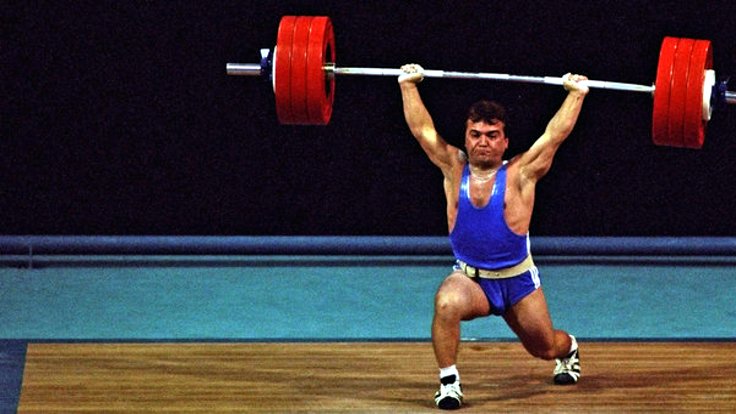
Equipment
Shoes
Weightlifting shoes have a unique design with a raised heel, flat sole, and straps which all contribute to the maximization of the weightlifter’s performance. The heel is raised by a half inch to an inch. The height in the heel allows the weightlifter to squat down in a more upright position. A more upright torso allows for a greater grip on the bar and a greater chance of sending it upward. The raised heel also allows for a deeper squat where knees are fully bent and shins are tilted forward through increased ankle range of motion. The tilt in the shins is important as it allows for the lowest possible depth and improves mechanical leverage (Charniga, 2006). In addition, in contrast to running shoes, which have an inbuilt cushion to absorb impact with each step taken while running, the objective of weightlifting shoes use all forces acting on the body. Rather than absorb the force, your shoe needs to help you use all the forces your body produces. The greater the force produced, the greater the weight you can lift (Morjaria, 2012). As shown through Newton’s Third law, the force you apply to the ground reacts back on you with an equal and opposite reaction (ground reaction force). Therefore, the greater the force you can produce through the ground will result in a greater force the ground will react on you. This allows you to pull the bar higher to get under the bar as well as transmitting more force from the ground to move up from a squat. Also, all contact points of the shoe will hit the ground due to the flat outer sole. Therefore, the efficiency of the lift will increase. Additionally, the flat, rubber sole of the shoe is designed to increase the coefficient of friction to prevent slipping and stabilizes the foot. Furthermore, the straps on the shoes ensure that the feet are supported in all directions. The consistent base helps with injury prevention which is vital to athletes.
Barbell
Barbells have the ability to store elastic energy and have the capacity to withstand the multiple lifts dropped from a various height and of different masses. The sleeves of the bar also rotate smoothly. The bar used to by weightlifters through competition is 2.2m in length, 45 pounds, 50mm in diameter and the grip section is 28mm.
Bumper Plates
Bumper plates, being the weight put onto the end of the barbell, are coated with solid rubber so that they can be dropped safely. They are secured onto the barbell with metal clamps so that they do not fall off during the lift especially lifts going overhead and of fast movement such as the clean and jerk.

